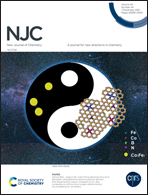Molecular-level understanding of the hTAS2R1 receptor-bitter tasting tetra-peptide binding: a structural biology study based on computational approaches†
Abstract
The present study describes application of computational approaches to identify robust and reliable three-dimensional quantitative structure activity relationship (3D-QSAR) models for hTAS2R1 ligands (23 peptides) through integrated ligand and structure based studies using bitter-tasting tetra-peptides. The 3D-QSAR analyses were performed using comparative molecular field analysis (CoMFA) and comparative molecular similarity index analysis (CoMSIA) methods. A CoMFA model with good predictive ability was produced based on the training set (17 peptides) and also showed satisfactory external predictive ability with 6 peptides (R2cv = 0.533, R2pred = 0.6601). To improve the performance of the derived model, a reliable CoMSIA model was obtained and gave enhanced statistical results (R2cv = 0.612, R2pred = 0.7433). In addition, MD simulations validated the rationality of the derived models and predicted the detailed interactions between peptides and the hTAS2R1 receptor. Some key residues (Leu18, Phe72, Tyr73, Lys76, and Pro187) were also pointed out after binding free energy calculations. The contour plots developed on the basis of the best model combined with the binding information helped to identify the significant structural features required for improving activity so as to design and predict novel bitter-tasting peptides.



 Please wait while we load your content...
Please wait while we load your content...